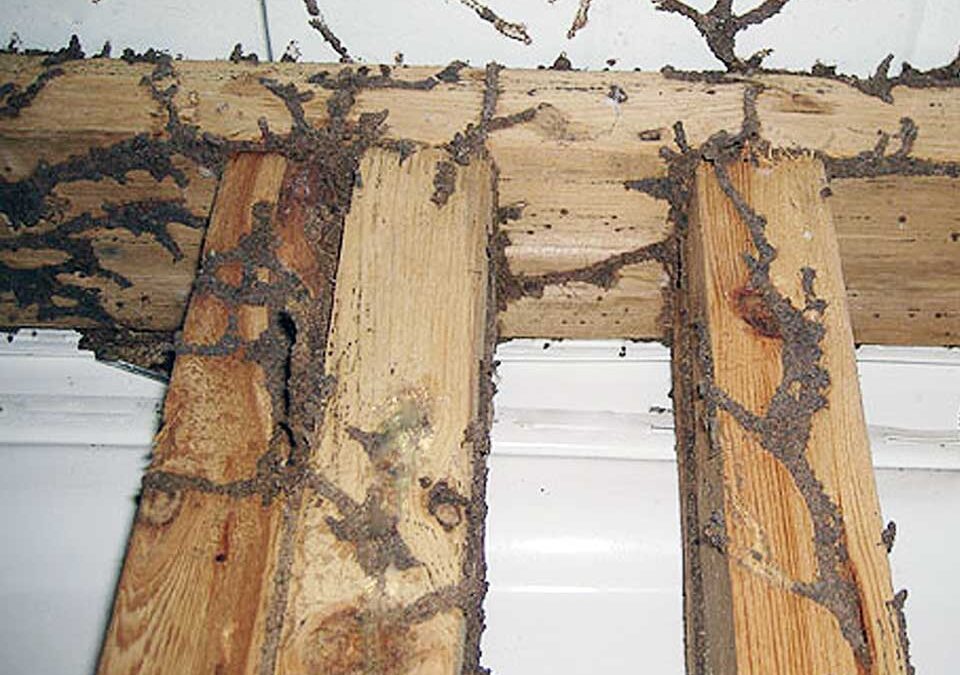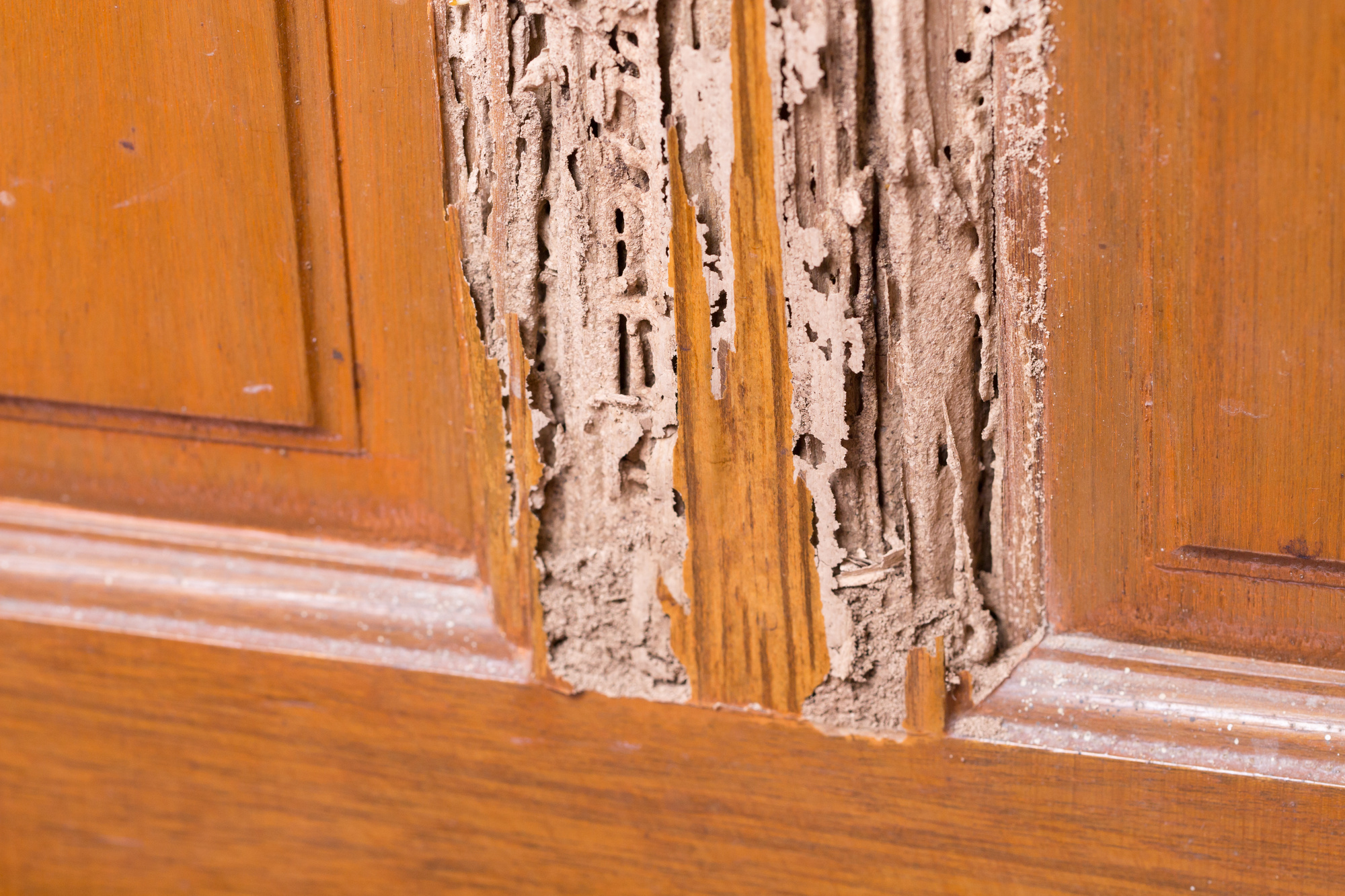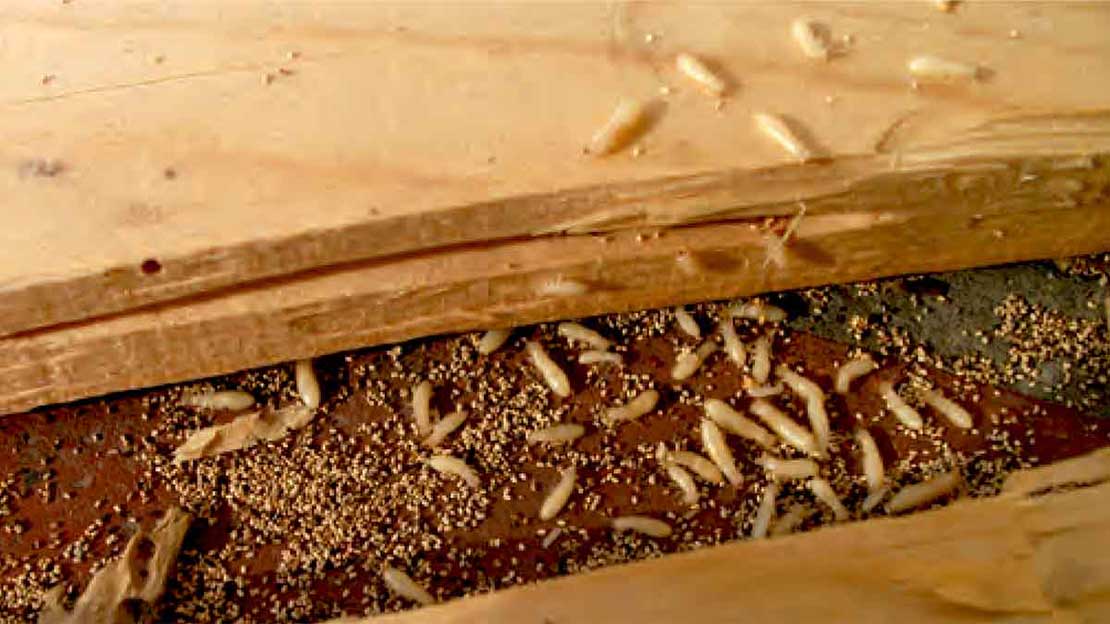Florida’s subtropical climate—marked by warmth, humidity, and relatively mild winters—attracts people looking for sunshine and comfortable living conditions. Unfortunately, these same factors also draw in termites. In Greenacres, a family-friendly city in Palm Beach County, termites can readily infest homes, condos, and commercial buildings year-round, silently damaging wooden structures before property owners even realize the threat. From expansive suburban neighborhoods to smaller multifamily units, effectively tackling termite problems requires knowledge of local conditions and proven treatment methods.
This service page explores why termites are so prevalent in Florida, the early red flags indicating possible infestations, and how a professional termite exterminator can protect your Greenacres property. Although a single termite sighting might not appear urgent, ignoring these insects can lead to escalating structural harm and costly repairs. By understanding termite behaviors and leveraging targeted solutions, homeowners and businesses can shield their investments while maintaining peace of mind.
Why Termites Flourish in Florida

1. Warm, Moist Conditions
Termites thrive in places where temperatures rarely drop below freezing and moisture is plentiful. In Florida, extended sunny periods mix with frequent rains, creating an environment that fosters year-round termite activity. Subterranean termites rely on damp soil to construct mud tubes, while drywood termites nest directly in wood protected by stable indoor climates. Greenacres, with its mild winters and humidity, accommodates each termite type easily.
2. Ample Food Sources
Termites consume cellulose, found in wooden beams, flooring, furniture, paper, and even certain fabrics. Whether a property is brand new or decades old, any wooden elements—like framing, siding, or wooden porch supports—can become targets if left unprotected. The constant availability of structural timber and wooden furnishings grants termites near-endless feeding opportunities.
3. Multiple Termite Species
Florida is home to various termite species, such as subterranean termites (including the aggressive Formosan variety), drywood termites, and dampwood termites. Each species has unique nesting habits and colony sizes. Subterranean termites often live underground and enter buildings through mud tubes, while drywood termites typically establish colonies within the wood itself. Without the extended cold snaps found in cooler states, these different termite populations can grow and swarm in multiple seasons.
4. Prolonged Swarming Periods
Termites release winged reproductives (called alates) to start new colonies, a process known as “swarming.” In Florida, swarming can occur any time from early spring to late fall, depending on the species. Since Greenacres usually sees comfortable temperatures most months, colonies may initiate new swarms repeatedly. Once a swarm locates an appropriate spot to nest—like an unprotected attic or a moist wooden foundation—termites establish a new infestation quickly.
Telltale Signs of Termites
1. Discarded Wings
Swarmers shed their wings soon after they find a place to mate and begin a colony. Discovering small, translucent wing clusters near window sills, door frames, or light fixtures is a major clue that termites have arrived. These discarded wings often appear in piles, looking like delicate fish scales.
2. Mud Tubes
Subterranean termites build thin, muddy tubes that connect their underground nests to aboveground wood. These tubes frequently appear along the foundation, inside crawl spaces, or even climbing interior walls. They help termites maintain the moist environment they need while traveling. Breaking open a tube may reveal pale termite workers inside if the infestation is active.
3. Hollow-Sounding Wood
Termites consume wood from the inside out, leaving a thin surface layer intact. If you tap on beams, wooden flooring, or window frames and hear a hollow or papery echo, that section may be partly eaten. In severe cases, a gentle probe with a screwdriver can puncture the compromised wood easily, exposing termite tunnels or galleries.
4. Frass (Droppings)
Drywood termites leave small, pellet-like droppings referred to as “frass.” These tiny, ridged pellets might accumulate in piles under infested areas—like window sills or near wooden furniture. Finding frass strongly signals drywood termite activity inside the wood, though they can also push frass out through small “kick-out” holes.
5. Warped or Bubbling Paint
Termite tunnels can allow moisture to build up behind paint or wallpaper, causing it to bubble, peel, or blister. In addition, advanced infestations might warp wooden walls, frames, or other structural components. If you can’t attribute this damage to water leaks, termites should be among your top concerns.
Risks of Ignoring Termites
1. Structural Damage
Over time, termites weaken support beams, floor joists, rafters, and other load-bearing components, jeopardizing a building’s integrity. Sagging floors, drooping ceilings, or cracked walls can result. In the worst cases, neglected termite problems lead to partial collapses or large-scale renovations costing tens of thousands of dollars.
2. Steep Repair Expenses
The longer termites are allowed to feed undetected, the more comprehensive and expensive the eventual repairs. Replacing framing, wood trim, or entire sections of drywall can be both pricey and disruptive, displacing occupants or halting business operations during the fix.
3. Decreased Property Value
Signs of termite infestation can deter potential buyers, tenants, or clients, harming a property’s market appeal. Even after thorough treatment, a record of severe termite damage may erode confidence and reduce resale value. Preventing or resolving issues swiftly preserves a home or building’s worth.
4. Spread to Neighboring Properties
In multi-unit structures or closely spaced residences, termite colonies may span multiple addresses through shared walls or subterranean pathways. Allowing one infestation to persist can endanger neighbors’ homes as well, straining relationships and complicating extermination if multiple owners must coordinate.
5. Insurance Gaps
Termite damage is often classified as a preventable maintenance issue, not typically covered by standard homeowners’ insurance policies. Many property owners must pay termite-related repairs and treatments out of pocket. Staying vigilant with inspections and professional interventions is essential for containing costs.

Why a Professional Exterminator Is Crucial
1. Correct Species Identification
Florida’s termite diversity demands a specialized response. A trained termite exterminator identifies whether subterranean, drywood, or other species are involved, then tailors methods to eradicate that specific type. Using a generic or incorrect approach may fail to clear out an infestation entirely.
2. Comprehensive Inspections
Termites often occupy hidden places—behind walls, in attics, or beneath floors. A professional inspector knows exactly where to look, deploying tools like moisture meters or infrared cameras to detect unseen moisture buildups or suspicious heat signatures. Uncovering every colony location is crucial for complete elimination.
3. Specialized Treatment Options
DIY sprays or spot treatments rarely penetrate deep enough to destroy entire colonies, especially if they hide in inaccessible areas. Professionals offer advanced solutions, including liquid termiticide barriers, structural fumigation, foam or dust injections, and bait systems, ensuring thorough coverage. They also possess insect growth regulators that disrupt termite breeding.
4. Safety and Controlled Application
Treating entire buildings or injecting chemicals into soils incorrectly can pose health or environmental risks if done improperly. Licensed exterminators adhere to strict guidelines, using modern termiticides with fewer harmful side effects. By applying treatments carefully around foundations or inside wall voids, they minimize occupant exposure.
5. Ongoing Monitoring and Prevention
Many exterminators recommend annual or periodic checkups to detect fresh termite activity early. Subterranean termite bait stations, for instance, must be inspected and replenished regularly. If new infestations emerge, professional warranties or follow-up services help contain them swiftly, protecting the property’s future.
Typical Methods for Termite Treatments
1. Inspection and Mapping
Prior to any treatment, a termite professional evaluates all structural components, from attic beams to basement joists. They note evidence like mud tubes, frass, or decaying wood, pinpointing the severity and spread of the infestation. This thorough overview guides their recommended approach.
2. Liquid Soil Barriers
Subterranean termites often require a liquid termiticide barrier around a building’s perimeter. Technicians may trench around the foundation and inject termiticide into the soil, forming a shield that kills or repels termites crossing the boundary. Proper drilling and application ensure soil injection hits critical nest pathways.
3. Bait Systems
Baiting stations placed at intervals around the property lure worker termites with cellulose laced in a slow-acting toxicant. As termites feed on the bait and return to the colony, they distribute poison to other members, eventually collapsing the entire nest. Regular monitoring confirms successful uptake or signals if more bait is needed.
4. Fumigation for Drywood Termites
Heavy drywood termite infestations sometimes warrant tenting and fumigation. Professionals enclose the structure with a tent, then release a fumigant that permeates wood. This gas kills termites in hidden galleries without major demolition. However, fumigation requires occupant evacuation for a few days and precise re-entry safety protocols.
5. Spot Treatments and Foaming
Localized drywood infestations identified early can sometimes be handled via spot treatments—drilling small holes and injecting liquid or foam termiticides. The foam expands to fill gaps, contacting termites within. While less disruptive than whole-structure fumigation, these spot treatments must be precise to ensure every pocket of termites is reached.

Service Area: Greenacres
Greenacres is recognized for its family-oriented environment, community events, and proximity to Florida’s scenic beaches. Yet the region’s balmy year-round climate also allows termites to stay active, placing local residences and commercial properties at risk. An experienced termite exterminator in Greenacres understands how the local building styles, environmental conditions, and seasonal changes influence termite behavior, offering solutions best suited for Palm Beach County.
Whether you own a single-family home in a quiet neighborhood or operate a bustling commercial plaza near a busy thoroughfare, professional termite treatments safeguard your property’s structural health. By eliminating existing colonies and implementing preventative measures, you maintain Greenacres’ welcoming ambiance free from the stress and financial burden termites can impose.
Why Our Termite Treatments Excel
1. Florida-Specific Experience
Years of successfully removing termites in Palm Beach County and beyond guide our approach. We draw on extensive knowledge about Florida’s typical termite species—subterranean and drywood—and the local conditions that encourage them. This insight shapes every step, from initial inspection to final checks, ensuring robust results for Greenacres properties.
2. Thorough Inspections and Targeted Plans
We start each job with a comprehensive review, checking attic rafters, crawl space joists, baseboards, and exteriors for telltale damage or droppings. Mapping the infestation lets us plan treatments that attack colonies at their source. Whether you need a liquid barrier, bait stations, or fumigation, our strategy addresses your property’s unique challenges.
3. Emphasis on Safety and Minimal Disruption
Our termite exterminator team uses advanced, regulated products that effectively eradicate termites while prioritizing the health of occupants, pets, and the environment. We communicate all necessary precautions, such as vacating during fumigation or avoiding treated soil temporarily. Our goal is a termite-free structure without long-lasting inconveniences.
4. Preventive Education and Warranty Options
We don’t just treat current infestations—we strive to keep termites from returning. After clearing out colonies, we advise on sealing cracks, reducing wood-to-soil contact, or mitigating moisture issues. Many of our treatments include warranties or optional follow-up inspections to detect any fresh activity before it spreads.
5. Quick Response and Lasting Success
Time is of the essence once termites are detected, as damage can progress quickly. Our prompt scheduling and effective treatments stop infestations at their source. Combining proper soil or structural treatments with thorough monitoring, we deliver enduring termite protection that saves owners from further stress or repair costs.
Next Steps
If you notice discarded wings near windows, thin mud tubes along your foundation, or hollow-sounding wood, acting swiftly prevents costly damage. Contact us to learn more or schedule your service. Early intervention helps limit the scope of infestation and reduces the need for extensive structural repairs.
Our termite treatments—tailored to Florida’s climate and Greenacres’ conditions—provide thorough, professional care. By eradicating current termite colonies and reinforcing property defenses, we protect homes, condos, and commercial buildings from these destructive pests. Trust an experienced termite exterminator to manage every aspect of control, from identifying species to ensuring no termite returns. Let us preserve your property’s integrity and your peace of mind.
Maintaining a Termite-Free Environment
- Eliminate Wood-to-Soil Contact
Keep wooden siding, decking, or structural supports a few inches above soil level. Use concrete footings for posts and avoid piling mulch directly against the foundation. This separation makes it more difficult for subterranean termites to access untreated wood. - Address Moisture Problems
Repair leaking pipes, air-conditioning drain lines, or gutters that cause water buildup near the foundation. Ensure downspouts channel water away from exterior walls. Dry conditions make your property less appealing to foraging termites and discourage fungus growth they might exploit. - Store Firewood Properly
If you have firewood or construction lumber, stack it off the ground and keep it a good distance from exterior walls. Termites can migrate from these piles to the main structure if wood is in direct contact with or close to your building. - Screen Vents and Openings
Equip attic vents, crawl space openings, and utility line gaps with mesh screens. Sealing possible access points denies termites a straightforward path indoors. Check older screens for rips or loose edges that could let swarmers slip through. - Monitor Wooden Components
Periodically inspect wooden fences, porches, windowsills, or door frames for discoloration, softness, or cracks that might hide termite activity. Recognizing early changes can lead you to call for professional assistance before significant structural damage occurs. - Regular Inspections
Professional termite checks once or twice a year go a long way in detecting subtle signs, especially since termites hide behind walls or beneath floorboards. Catching termite invasions quickly often means simpler treatments and smaller repair bills.
While Florida’s climate may consistently encourage termite presence, proactive steps—combined with expert termite treatments—keep them from undermining your property. Maintain tidy landscapes, correct moisture leaks, and schedule professional evaluations, ensuring that any developing termite threat is swiftly neutralized. When Greenacres residents and businesses follow these guidelines, they reap the benefits of living in this sunny locale without the worry of insidious termite damage.
